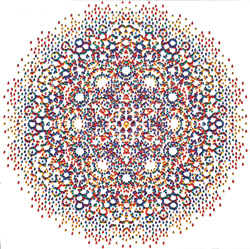| Stomachion | |||||
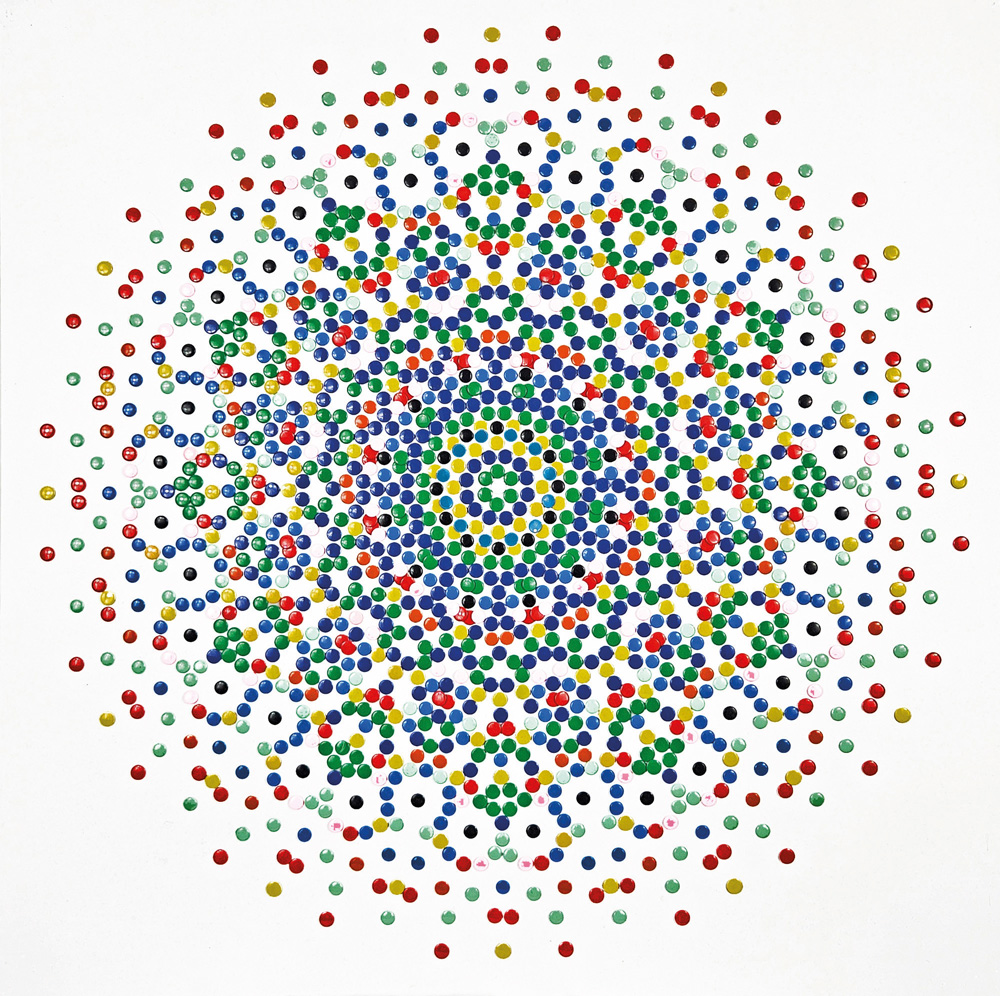 |
The Secret of Symmetry Symmetry is ubiquitous in nature: all living beings - humans, animals, plants - are organized in some symmetrical way. Likewise, matter generally has a symmetrical structure, such as in the form of crystals or molecular compounds like DNA, down to the arrangement of atoms. Symmetry can even be understood as the original form of communication in the exchange of information. It's no wonder that symmetry properties also play a central role in mathematics and art. In geometry, for example, symmetry refers to the properties of objects that remain unchanged under certain transformations. For instance, an equilateral triangle has symmetries that can be described by rotations or reflections that map the triangle onto itself. It can be rotated three times by 120 degrees each or reflected three times across axes through the center without altering its appearance. The number of possible symmetric transformations of an object is called its symmetry group. Studying the properties of such symmetry groups in conjunction with certain operations, such as addition, multiplication, etc., led to the development of a field of mathematics called group theory. A specific area of group theory deals with objects like a circle or a sphere that can be rotated by any angle without changing their appearance, thus possessing infinitely many symmetries. This area is investigated with the so-called Lie algebra, named after the Norwegian mathematician Sophus Lie (1842-1899). Through Lie algebra, extremely complex group structures can be described and studied in a geometric manner. The most complex mathematical structure known for over 100 years could only be decoded in 2007 after five years of intensive research. It is called the E8 Lie group, a group of symmetric transformations that map an eight-dimensional space onto itself, requiring 248 real parameters to describe all possible transformations of the group. This group is of significant importance in physics and mathematics as it can help develop and understand theoretical models that describe nature and the world around us. For example, it plays a crucial role in string theory, one of the most significant theories in modern physics that seeks to unify gravity (general relativity) and quantum mechanics in the so-called "Theory of Everything".
|
|
A possible geometric projection of the E8 Lie group (thumbtacks on lightweight board, 70 x 70 cm). |
||
|
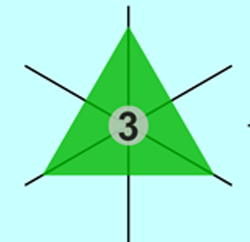 |
|
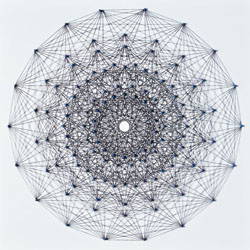 Geometric representations of the E8 Lie group (pins on lightweight board, 50x50 cm). Geometric representations of the E8 Lie group (pins on lightweight board, 50x50 cm). |
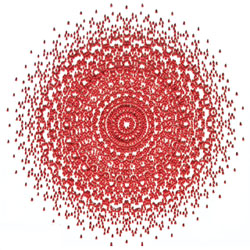 Above/right: Representation of the symmetries of an equilateral triangle. Above/right: Representation of the symmetries of an equilateral triangle. |
|
